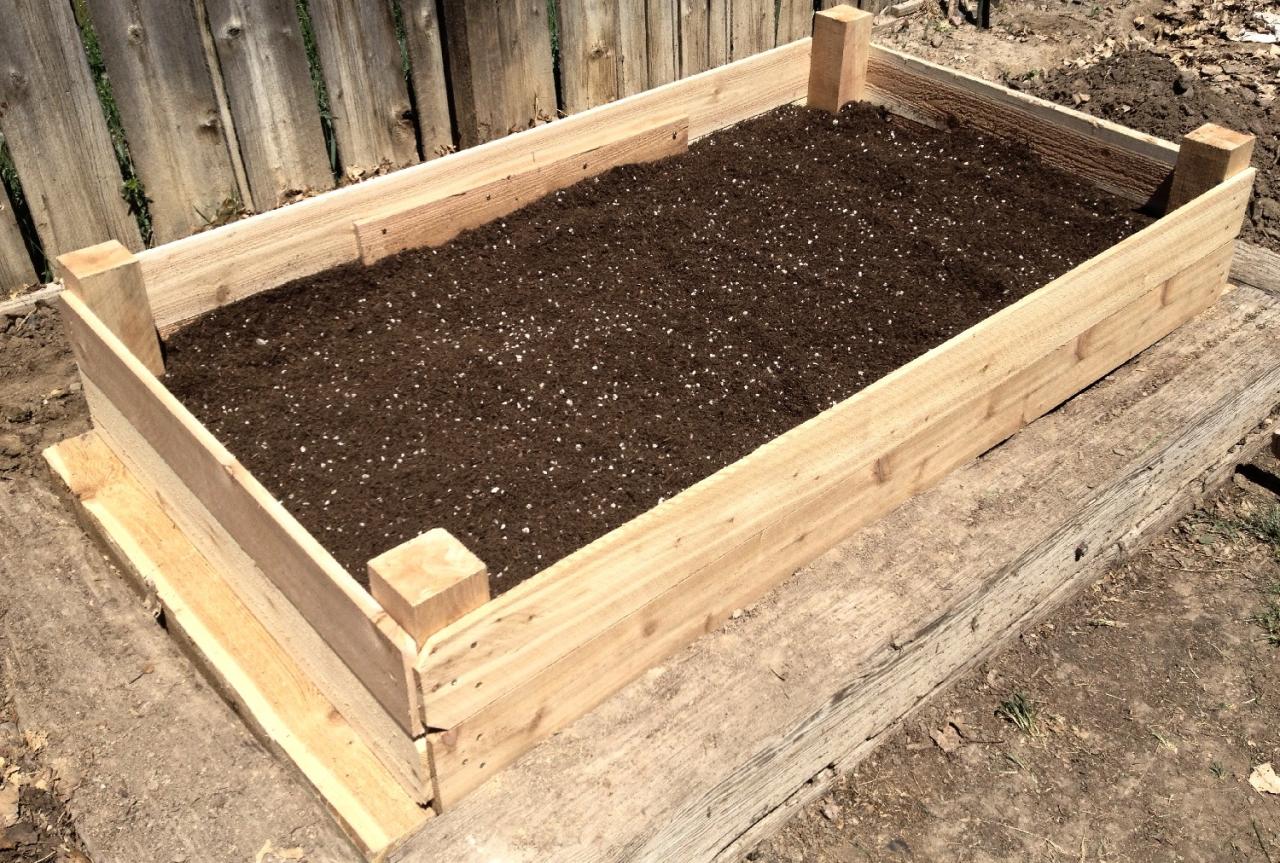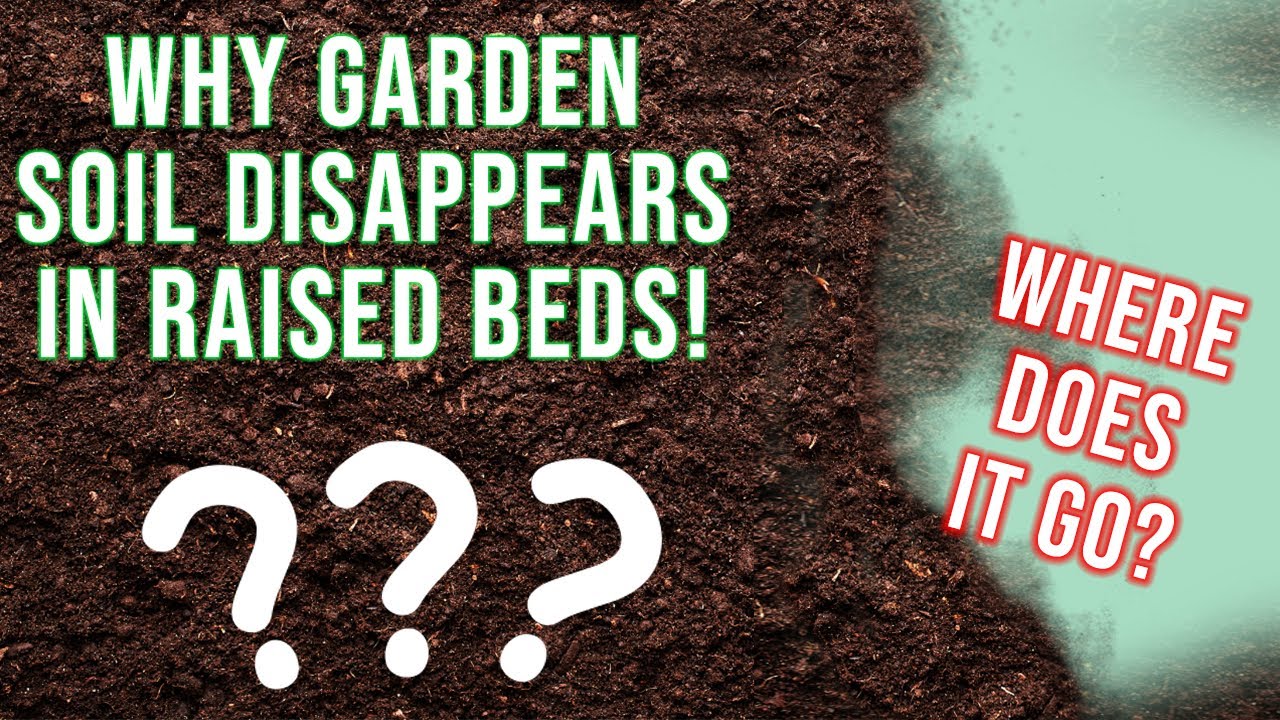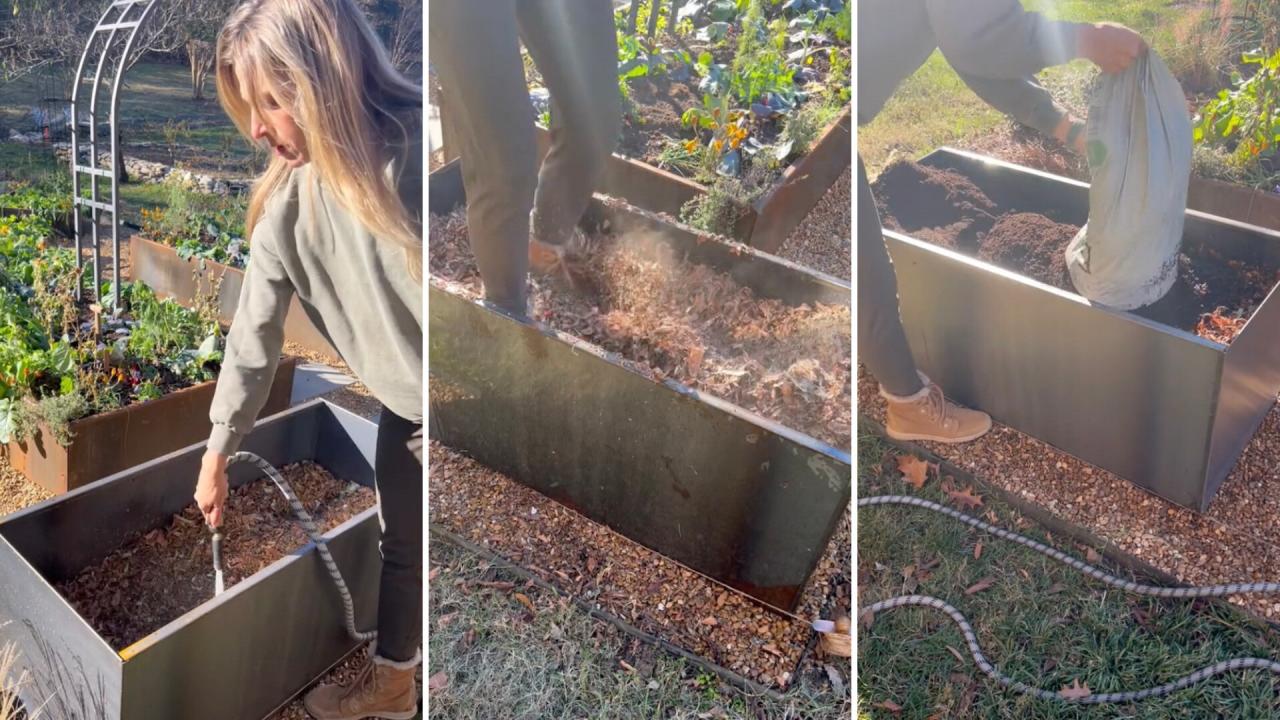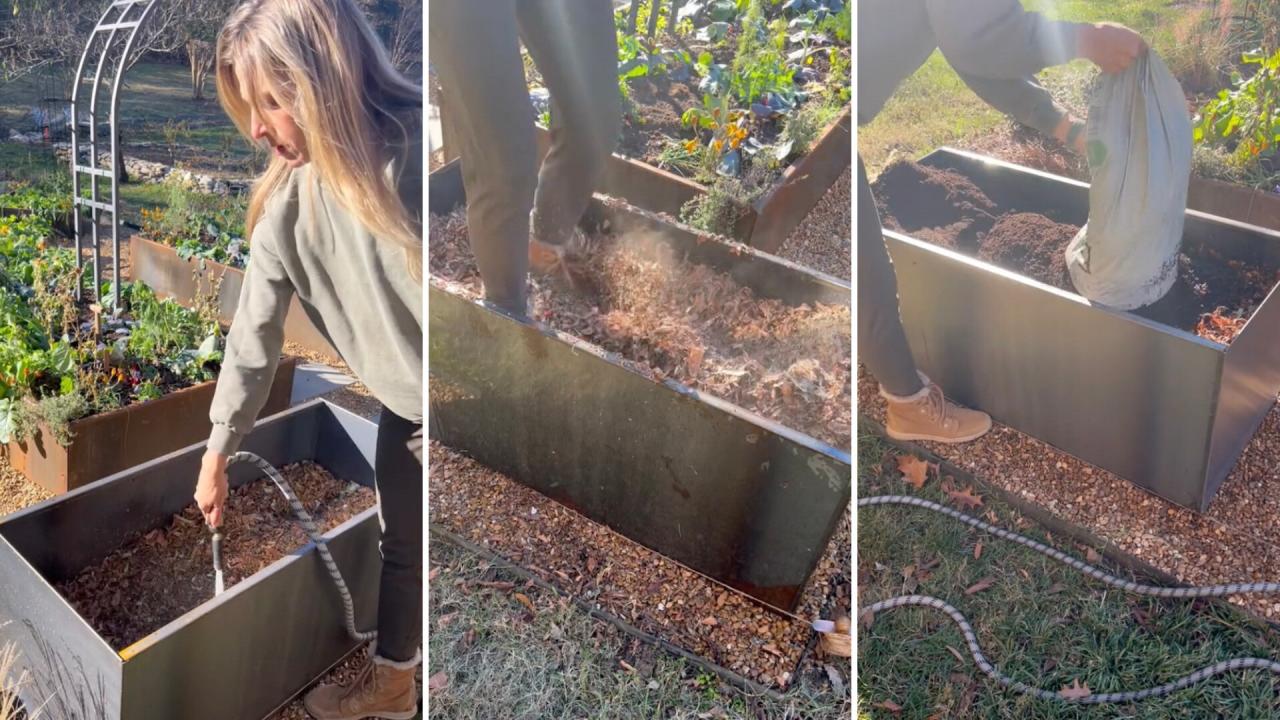Why Some Plants Can Harm Your Raised Bed Soil sets the stage for this enthralling narrative, offering readers a glimpse into a story that is rich in detail and brimming with originality from the outset. Raised bed gardening offers a plethora of benefits, from increased control over soil quality to a more efficient use of space.
However, the selection of certain plants can have unforeseen consequences, potentially disrupting the delicate balance of your soil ecosystem. This article delves into the world of plants that can harm your raised bed soil, exploring the mechanisms behind their negative impact and offering strategies to mitigate these risks.
From allelopathy, where plants release chemicals that inhibit the growth of their neighbors, to nutrient depletion, where certain species suck up essential nutrients, the impact of plant choices can be significant. Understanding these potential dangers allows gardeners to make informed decisions, fostering a thriving and sustainable raised bed garden.
Introduction
Raised bed gardening offers numerous advantages, including improved soil quality, better drainage, and increased control over growing conditions. However, certain plants can negatively impact the health of your raised bed soil, potentially hindering plant growth and compromising the overall success of your garden.
Understanding these potential pitfalls is crucial for maintaining a thriving and productive raised bed garden.
Understanding the Importance of Healthy Soil
Healthy soil is the foundation of any successful garden. It provides essential nutrients, water retention, and aeration, all crucial for plant growth. In raised beds, soil health is even more critical, as the soil is contained within a limited space and relies on careful management for optimal performance.
Benefits of Raised Bed Gardening
Raised bed gardening offers a range of advantages:
- Improved Drainage: Raised beds allow excess water to drain away, preventing waterlogging and root rot.
- Enhanced Soil Quality: Raised beds provide a controlled environment for soil amendment and improvement.
- Increased Control: Gardeners can customize the soil composition and growing conditions to suit their specific needs.
- Reduced Pests and Diseases: Raised beds can create a barrier against soil-borne pests and diseases.
Plants that Can Harm Raised Bed Soil
Some plants have characteristics that can negatively affect the health of your raised bed soil. These include:
- Allelopathic Plants: These plants release chemicals that inhibit the growth of other plants, potentially disrupting the balance of your raised bed ecosystem.
- Heavy Feeders: Certain plants require significant amounts of nutrients, depleting the soil and potentially creating nutrient imbalances.
- Disease-Prone Plants: Some plants are susceptible to diseases that can spread to other plants in the raised bed, compromising the overall health of your garden.
Plants that Can Harm Soil
While raised beds offer numerous benefits for gardening, it’s crucial to be mindful of the plants you choose to cultivate. Some plants can have detrimental effects on the soil health of your raised beds, impacting the growth and yield of other plants.
Understanding these potential issues and selecting suitable plant companions can help maintain a thriving garden ecosystem.
Allelopathic Plants
Allelopathy refers to the chemical interaction between plants, where one plant releases substances that inhibit the growth of others. These substances can be released through roots, leaves, or even decaying plant matter.
- Black Walnut (Juglans nigra): This tree is known for releasing juglone, a potent allelopathic compound that can suppress the growth of many plants, including tomatoes, potatoes, and blueberries.
- Sage (Salvia officinalis): Sage releases a compound called thujone, which can inhibit the growth of some plants, including lettuce, carrots, and beans.
- Eucalyptus (Eucalyptusspp.): Eucalyptus trees release a range of allelopathic compounds that can suppress the growth of other plants, making it challenging to grow anything beneath their canopy.
Nutrient Depleting Plants
Certain plants have a high demand for specific nutrients, which can lead to nutrient depletion in the soil if they are grown in the same raised bed for extended periods.
- Heavy Feeders:Plants like broccoli, cabbage, and spinach require a significant amount of nitrogen, phosphorus, and potassium, which can deplete these nutrients from the soil if not replenished through fertilization.
- Acid-Loving Plants:Plants like blueberries, rhododendrons, and azaleas prefer acidic soil. If these plants are grown in a raised bed, they can gradually acidify the soil, making it less suitable for other plants that prefer neutral or alkaline conditions.
Pest Attracting Plants
Some plants can attract pests that may damage other plants in the raised bed.
- Aphid Magnets:Plants like roses, zinnias, and sunflowers are known to attract aphids, which can then spread to other plants in the raised bed.
- Whitefly Hosts:Plants like tomatoes, peppers, and squash can attract whiteflies, which can damage these plants and other nearby plants.
Mechanisms of Soil Harm
Plants can negatively impact soil health through various mechanisms, disrupting the delicate balance of nutrients and organisms within the raised bed ecosystem. These harmful effects are not always immediate but can manifest over time, leading to diminished plant growth and overall soil degradation.
Allelopathy and Its Impact
Allelopathy refers to the chemical interactions between plants, where one plant releases substances that inhibit the growth or development of neighboring plants. These substances, known as allelochemicals, can be released through roots, leaves, or decaying plant material.
“Allelopathy is a form of biological warfare, where plants use chemicals to compete for resources.”
Certain plants can introduce harmful pests and diseases into your raised bed soil, disrupting the delicate balance of your garden ecosystem. One common culprit is fungus gnats, attracted to moist soil and decaying plant matter. To combat these pesky insects, you can employ a natural solution like apple cider vinegar, a method detailed in this guide.
By eliminating gnats, you can protect your raised bed soil from further infestation and maintain a healthy environment for your plants to thrive.
The effects of allelopathy can range from reduced germination and seedling growth to stunted plant development and even plant death.
- Black walnut (Juglans nigra) : This tree releases juglone, a potent allelochemical that inhibits the growth of many plants, including tomatoes, potatoes, and blueberries.
- Sagebrush (Artemisia tridentata) : Sagebrush releases terpenes that can suppress the growth of grasses and other plants in its vicinity.
- Eucalyptus (Eucalyptusspp.) : Eucalyptus trees release essential oils that can inhibit the growth of other plants, making it difficult to grow anything underneath them.
Nutrient Depletion
Certain plants have a high demand for specific nutrients, which can lead to their depletion from the soil. This nutrient imbalance can negatively affect the growth of other plants in the raised bed.
- Heavy feeders:Plants like broccoli, kale, and spinach require significant amounts of nitrogen, phosphorus, and potassium, which can deplete these nutrients from the soil if not replenished.
- Acid-loving plants:Plants like blueberries and rhododendrons thrive in acidic soil, but their growth can lead to a decrease in soil pH, making it difficult for other plants to thrive.
Attracting Pests and Diseases, Why Some Plants Can Harm Your Raised Bed Soil
Some plants act as magnets for pests and diseases, attracting insects and pathogens that can spread to other plants in the raised bed. This disruption of the ecosystem can lead to significant crop losses.
- Susceptible plants:Plants like tomatoes, peppers, and cucumbers are susceptible to various pests and diseases, including aphids, whiteflies, and fungal diseases. Their presence in the raised bed can increase the risk of infestation for other plants.
- Weed hosts:Certain weeds, like dandelion and chickweed, can harbor pests and diseases, acting as breeding grounds and spreading them to nearby plants.
Identifying Harmful Plants

Identifying plants that may be harmful to raised bed soil can be challenging, but it is crucial to protect your soil health and ensure your plants thrive.
Signs of Soil Damage
Observing your raised bed soil for signs of damage can be a good starting point for identifying harmful plants. Some common signs include:
- Changes in soil texture:Soil may become compacted, hard, or overly loose, indicating root damage or the release of harmful substances.
- Discoloration:Soil may turn a darker or lighter color than usual, indicating a change in pH or the presence of harmful compounds.
- Unusual growth patterns:Plants may exhibit stunted growth, wilting, or discoloration, suggesting nutrient deficiencies or root damage.
- Presence of pests or diseases:Certain plants attract pests or diseases that can harm other plants in the raised bed, leading to soil deterioration.
Researching Plant Characteristics
Researching the characteristics and potential effects of plants on soil can help you identify harmful species. Several resources can be utilized for this purpose:
- Local gardening clubs or extension services:These organizations often have knowledgeable staff who can provide information on plants specific to your region and their impact on soil.
- Online databases and websites:Websites like the USDA PLANTS Database and the Missouri Botanical Garden’s Plant Finder offer comprehensive information on plant characteristics and potential ecological effects.
- Gardening books and journals:Many publications provide detailed information on plant identification, cultivation, and potential soil impacts.
Identifying Harmful Plants
Once you understand the signs of soil damage and have researched plant characteristics, you can start identifying potentially harmful plants in your raised bed.
While certain plants can contribute to soil health, others can disrupt the delicate balance of your raised bed. For instance, plants that attract gnats, like those with moist foliage, can create an environment that’s less than ideal. To create a gnat-free haven for your plants, consider strategies like improving drainage and ensuring adequate airflow, as outlined in The Best Environment for Keeping Gnats Away from Plants.
Ultimately, understanding the specific needs of your plants and the impact they have on the soil is crucial for maintaining a thriving raised bed garden.
- Invasive plants:These plants can spread aggressively and outcompete native species, disrupting soil balance and ecosystem health.
- Allelopathic plants:These plants release chemicals that inhibit the growth of other plants, potentially damaging soil structure and nutrient availability.
- Plants with deep or extensive root systems:Some plants have root systems that can damage soil structure and compete with other plants for water and nutrients.
Examples of Harmful Plants
Here are some examples of plants that can be harmful to raised bed soil:
- Japanese Knotweed:An invasive plant with a dense root system that can damage soil structure and outcompete other plants.
- Black Walnut:An allelopathic tree that releases juglone, a chemical that inhibits the growth of many plants, including tomatoes and potatoes.
- Morning Glory:A vine with a deep root system that can compete with other plants for water and nutrients.
Preventing Soil Damage
Preventing soil damage from harmful plants requires a proactive approach that starts with careful planning and continues throughout the gardening season. Understanding the mechanisms by which plants can harm soil is crucial in developing effective strategies for mitigation.
Plant Selection and Spacing
Choosing the right plants for your raised bed is the first step in preventing soil damage. Research the plants you intend to grow and consider their potential allelopathic effects. Some plants, like black walnut trees, release chemicals that can inhibit the growth of other plants.
Others, like sunflowers, can be aggressive growers that crowd out neighboring plants.
- Consult plant databases:Resources like the USDA Plants Database or the Missouri Botanical Garden’s Plant Finder provide information on plant characteristics, including their potential for allelopathy.
- Choose compatible plants:Select plants that are known to coexist well, avoiding combinations that could lead to competition or allelopathic interactions.
- Consider spacing:Allow adequate spacing between plants to minimize competition for resources like sunlight, water, and nutrients. Proper spacing helps ensure healthy growth and reduces the risk of allelopathic effects.
Managing Plant Residues
Plant residues, including leaves, stems, and roots, can contribute to allelopathic effects. The accumulation of these residues can release chemicals into the soil, inhibiting the growth of other plants.
- Remove plant residues:Regularly remove plant residues from your raised bed, especially those from known allelopathic plants. This helps prevent the buildup of harmful chemicals in the soil.
- Compost plant residues:Composting plant residues can break down harmful chemicals and create beneficial soil amendments. However, ensure that you compost residues from allelopathic plants separately from other garden waste.
- Avoid tilling:Tilling can disrupt the soil structure and release allelopathic chemicals from plant residues. Consider alternative methods like no-till gardening or hand weeding to minimize disturbance.
Preventing Allelopathic Effects
Allelopathic effects can be minimized through careful planning and management practices. Understanding the mechanisms of allelopathy and the specific plants involved is key to preventing these effects.
- Choose plants with low allelopathic potential:Select plants known for their low allelopathic effects, or those that have been shown to be compatible with your desired plant combinations.
- Rotate crops:Rotating crops can help break the cycle of allelopathic effects. By planting different plant families in a specific area each year, you can minimize the buildup of harmful chemicals in the soil.
- Use beneficial microorganisms:Certain beneficial microorganisms can help break down allelopathic chemicals and improve soil health. Consider adding microbial inoculants to your raised bed to enhance soil fertility and reduce allelopathic effects.
Remediating Damaged Soil: Why Some Plants Can Harm Your Raised Bed Soil

Restoring soil health after damage from harmful plants requires a multi-pronged approach. This involves removing or controlling the harmful plants, amending the soil with beneficial organisms and organic matter, and creating an environment that discourages their re-emergence.
Restoring Soil Health
Remediating soil damaged by harmful plants is a process of rebuilding soil structure, fertility, and microbial activity. This process requires a combination of methods that address the specific damage caused by the plants.
Amending Soil with Beneficial Organisms
Introducing beneficial organisms to the soil can help counteract the negative effects of harmful plants. These organisms can include:
- Mycorrhizal fungi:These fungi form symbiotic relationships with plant roots, improving nutrient uptake and water absorption. They can help restore soil structure and reduce the impact of harmful plants by competing for resources.
- Compost tea:This is a liquid solution rich in beneficial bacteria and fungi. Applying compost tea to the soil can introduce a diverse range of microbes that help break down organic matter, improve soil structure, and outcompete harmful organisms.
- Beneficial nematodes:These microscopic worms can help control harmful pests and improve soil health. Some nematodes feed on harmful plant roots, reducing their population and impact on the soil.
Amending Soil with Organic Matter
Adding organic matter to the soil can improve its structure, water retention, and nutrient content. This can help mitigate the negative effects of harmful plants and create a more hospitable environment for beneficial organisms.
- Compost:This is a decomposed organic matter that improves soil fertility and structure. Applying compost to the soil can help create a healthier environment for beneficial organisms and reduce the impact of harmful plants.
- Manure:Animal manure is a rich source of nutrients and organic matter. It can improve soil fertility and structure, but it is important to use composted manure to avoid introducing harmful pathogens.
- Mulch:Organic mulch, such as wood chips or straw, can help suppress weeds, retain moisture, and improve soil health over time. Mulching can help prevent the spread of harmful plants and create a more favorable environment for beneficial organisms.
Removing or Controlling Harmful Plants
The most effective way to prevent further damage to the soil is to remove or control the harmful plants. This can be done through various methods:
- Hand-pulling:For small infestations, hand-pulling can be an effective way to remove harmful plants. Be sure to remove the entire root system to prevent regrowth.
- Herbicides:In some cases, herbicides may be necessary to control large infestations or difficult-to-remove plants. However, it is important to use herbicides cautiously and follow all label instructions to avoid harming beneficial organisms and the surrounding environment.
- Solarization:This method involves covering the soil with clear plastic sheeting for several weeks to kill weeds and other harmful plants using the heat from the sun.
- Crop rotation:Rotating crops can help break the life cycle of harmful plants and prevent them from becoming established in the garden.
Conclusion

Understanding the impact of plants on soil health is crucial for maintaining a thriving garden ecosystem. By recognizing the potential for harmful plants to disrupt soil balance, gardeners can make informed decisions about plant selection and cultivation practices.
The Importance of Responsible Gardening Practices
Responsible gardening practices play a vital role in preserving soil health and promoting sustainable gardening. These practices involve carefully selecting plants that are compatible with the local environment and avoiding the introduction of invasive or harmful species. Regularly monitoring soil conditions and implementing appropriate management strategies can help prevent soil degradation and maintain a healthy growing environment.
Ongoing Soil Monitoring and Maintenance
Regular soil testing is essential for identifying potential imbalances or deficiencies that may arise from the presence of harmful plants. Soil tests can provide valuable insights into pH levels, nutrient content, and the presence of harmful pathogens. Based on the test results, gardeners can adjust their fertilization and watering practices to optimize soil conditions and mitigate the negative effects of harmful plants.
Final Summary
By understanding the potential pitfalls of plant selection and implementing preventative measures, you can create a thriving raised bed garden that supports a healthy ecosystem. Remember, responsible gardening practices involve continuous monitoring and adaptation, ensuring that your soil remains fertile and your plants flourish.
This article has provided a starting point for navigating the complexities of plant-soil interactions, equipping you with the knowledge to make informed choices and nurture a vibrant garden.
FAQ Explained
What are some common signs of soil damage caused by harmful plants?
Common signs include stunted growth, yellowing leaves, wilting, and an overall decline in plant health. You may also notice an increase in pests or diseases.
Can I use compost to remediate damaged soil?
Yes, compost can be beneficial in restoring soil health. It adds essential nutrients and improves soil structure.
Are there any specific plants that are known to be particularly harmful to raised bed soil?
Some examples include black walnut trees (Juglans nigra), which release juglone, a toxin that can harm many plants, and sunflowers (Helianthus annuus), which can deplete the soil of nutrients.
